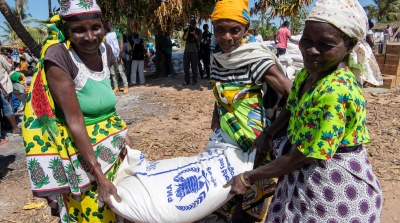
The United Nations World Food Programme (WFP) and the Government of Odisha have joined hands to improve household food and nutritional security by strengthening livelihood initiatives and reaching thousands of State-supported Women’s Self-Help Groups (WSHGS). An agreement to this effect was signed on June 24 this year, between WFP Country Director in India, Bishow Parajuli, and Sujata R Karthikeyan, Commissioner-cum-Secretary, Department of Mission Shakti, Government of Odisha, at a virtual ceremony. But what is WFP and what’s its plan for Odisha? Let’s find out.
Combating hunger
The World Food Programme is a Rome-based United Nations humanitarian agency that strives to combat hunger around the world and improve conditions in areas affected by war, conflict, and disaster. Entirely funded by donations from governments, corporates, and individuals, it provides aid to nearly 100 million people in over 80 countries worldwide. It also won the Nobel Peace Prize last year for its efforts towards fighting hunger.
When was it founded?
The agency was founded in 1961, thanks to the efforts of the U.S. under the administration of John F. Kennedy. The idea to provide food aid through the UN system was mooted by the previous President Dwight Eisenhower. The agency, which began with a mandate of three years, soon justified its existence by effectively responding to various crises such as the Iran earthquake, a typhoon in Thailand, and the Algerian war. It became a full-fledged UN programme in 1965. In the nearly six decades since its inception, the WFP has grown to be the largest humanitarian agency in the world.
Reaching aid
Most of WFP’s work is concentrated in conflict-ridden areas as people there are more likely to be undernourished than those elsewhere. Besides specialising in reaching aid to some of the most dangerous and remotest places in the world, the WFP focusses on providing development and rehabilitation aid. It is engaged in supporting school meals projects in different countries, including India. It works in association with two other UN agencies, namely the Food and Agriculture Organisation, which helps countries draw up policy to support sustainable agriculture, and the International Fund for Agricultural Development, which finances projects in rural areas. According to the WFP, it distributes over 15 billion rations of food yearly. It has over 5,000 trucks, 30 ships, and 100 aircraft engaged daily in delivering food and other assistance to those in need across the globe.
WFP-Odisha collaboration
Odisha Chief Minister Naveen Patnaik on June 1 approved the formation of the new ‘Department of Mission Shakti’ whose main objectives include working with the women’s groups to create livelihood opportunities, stepping up women’s participation in decision making, and improving the household nutritional security. The collaboration between the WFP and the Odisha government will focus on fulfilling these core objectives through the holistic empowerment of women in the State. It will support the thousands of State-supported Women’s Self-Help Groups by providing technical assistance and facilitating capacity development which in turn will contribute to long-term food security. Besides building the capacity of the women’s groups, it will focus on undertaking evaluation to improve their functioning, linking them with the government procurement systems, enhancing awareness about their rights and entitlements, and on developing tools for monitoring. This partnership will be effective till December 2023.
Picture Credit : Google




